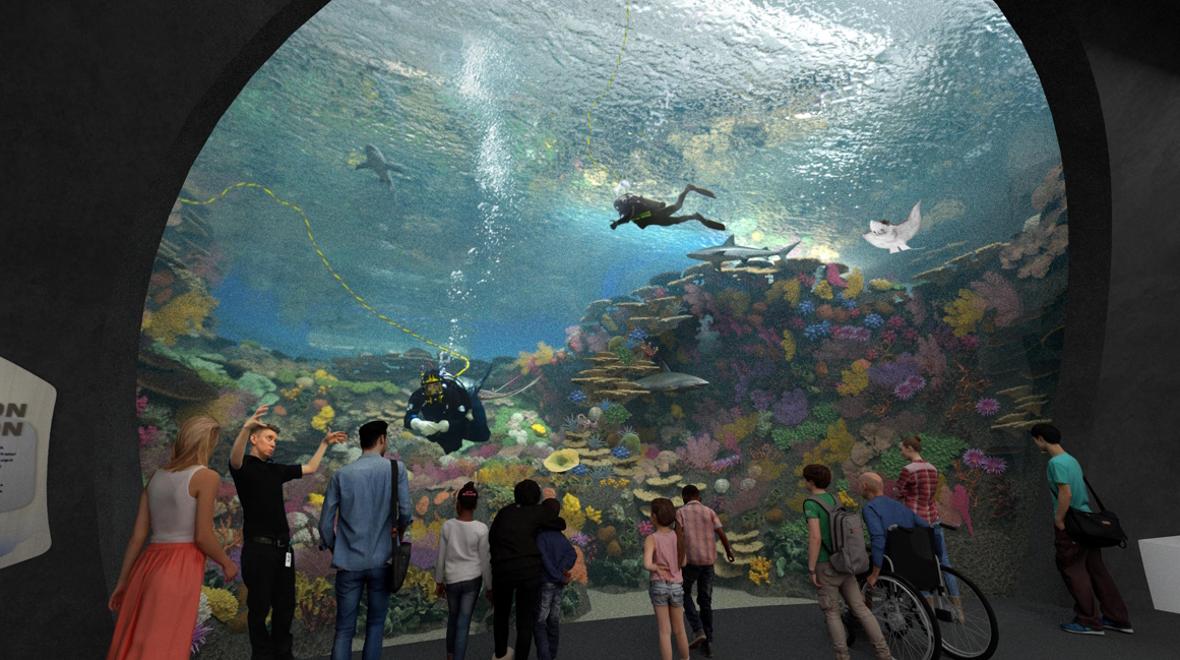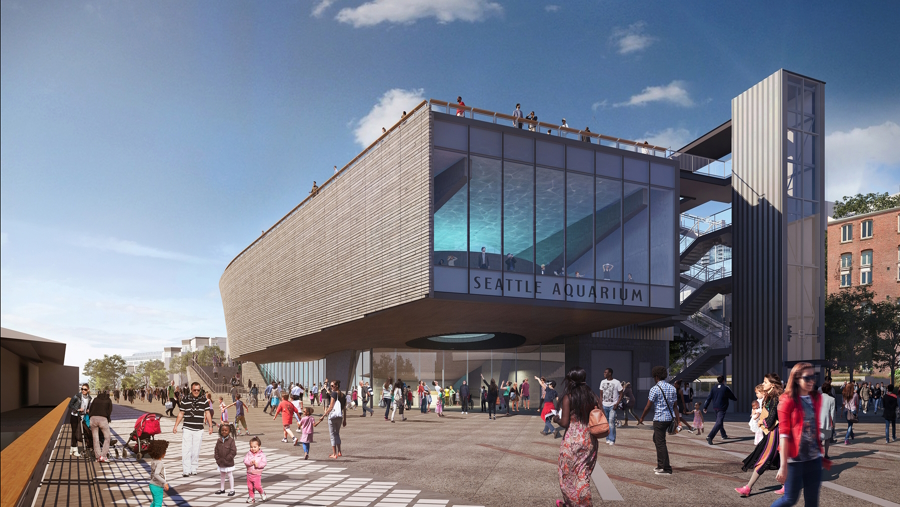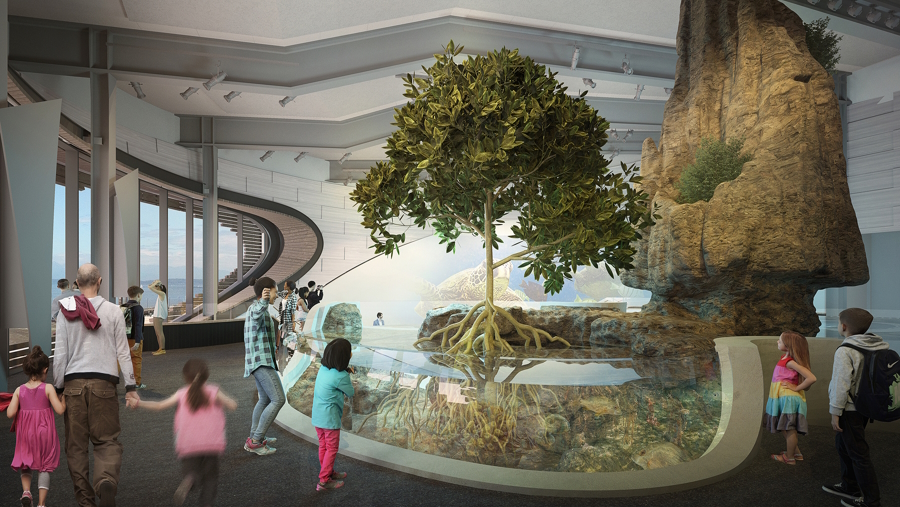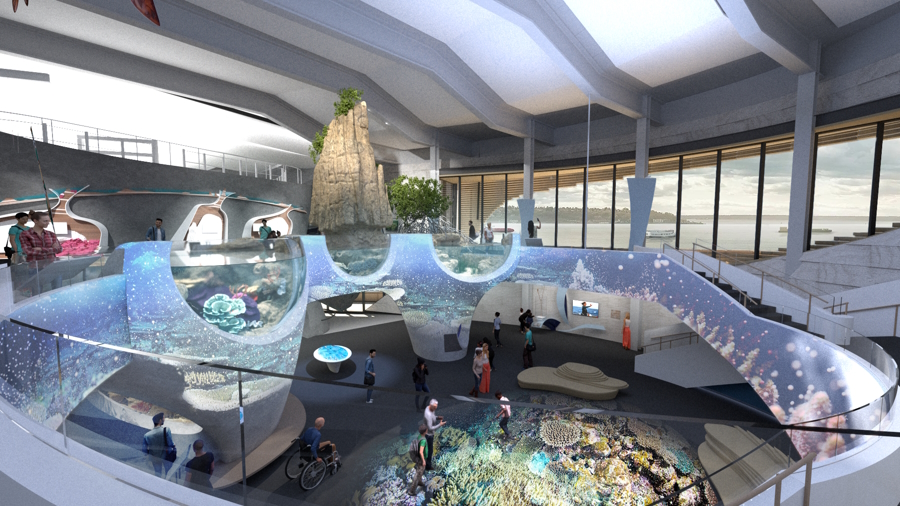
Photo:
An artist rendering of The Reef. Photo courtesy Seattle Aquarium
The Seattle Aquarium’s newest addition, the Ocean Pavilion, is almost here. The goal of the Ocean Pavilion, set to open this summer, is to “tell the story” of the challenges faced by our shared oceans.
Many things threaten ocean waters — plastic pollution, the burning of fossil fuels, overfishing and more — and healthy marine life is decreasing at high rates.
“All oceans are connected,” says Emily Malone, Seattle Aquarium’s public relations specialist. “The things that have happened here in the Salish Sea have implications all the way around the world,” she says, giving as an example the fact that orca whales here and zebra sharks in the Indo-Pacific face the same kinds of threats.
“We wanted to bring the Coral Triangle here and show how we’re all connected and why marine conservation is more important now than ever,” Malone explains.
A multiyear project, the pavilion is set adjacent to and just east of the current Seattle Aquarium. It has been built into Seattle’s new Overlook Walk, which connects the rebuilt waterfront and Pike Place Market.

The new Overlook Walk will take you through the Ocean Pavilion’s public plaza, which will offer a view of the pavilion’s largest exhibit. Anyone who passes through can see the reef ecosystem for free. Aquarium staff and volunteers will be on-site giving tours and sharing information about the creatures in the exhibit. Also, the new Ocean Pavilion will showcase public art that was created by and honors the Coast Salish people, on whose traditional and contemporary territories the aquarium sits.
The Ocean Pavilion will feature three main habitats. The largest, called The Reef, will give visitors intimate views into a 360,000-gallon arching tank that contains more than 100 species from the Coral Triangle in the Indo-Pacific. The Indo-Pacific leopard sharks in this exhibit are part of the aquarium’s world-first program that works to breed and release baby sharks to restore wild populations.
The second habitat, The Archipelago, will be a two-level exhibit. On the top level, there will be a mangrove lagoon habitat, where you’ll see small rays and fish. A window on the lower level will offer a view of the underside of a coral reef.

“It’s really stunning,” Malone says. “These gorgeous mangrove trees have these intricate roots that serve as this underwater ecosystem in and of themselves, where you’ll see different small fish and rays living there.”
And the third exhibit, called At Home in the Ocean, is more of a series of smaller habitats where visitors will see schools of beautiful lionfish, clownfish, garden eels and other species.
“It will give a closer look of inside the reef, and that’s going to be a cool one, especially for children to see, because it’s going to put them at eye level, and it will inspire empathy for the creatures and animals in our care,” Malone says. “It’s going to be really exciting.”
In addition to the new exhibits, the new Ocean Pavilion project will introduce a new off-site animal care center, which will serve as a hub for the aquarium’s animal care and rehabilitation efforts.

According to the aquarium’s website, “For animals who will live in the Ocean Pavilion, the Animal Care Center serves as their first stop to gently acclimate to their new environment. Here, we’ll get to know these creatures as individuals and make sure they’re ready to thrive in their new Ocean Pavilion habitats.”
Malone believes the Ocean Pavilion will offer visitors an experience like no other.
“It’s going to be so exciting. Not everyone has the luxury of being able to go around the world and see a coral reef or be able to come face-to-face with these amazing species. So people are going to be able to experience a whole other world that we’ve never seen before,” Malone says.
Malone hopes children and families visiting the Ocean Pavilion and coming face-to-face with these amazing creatures will walk away inspired by and empathetic toward marine conservation.











